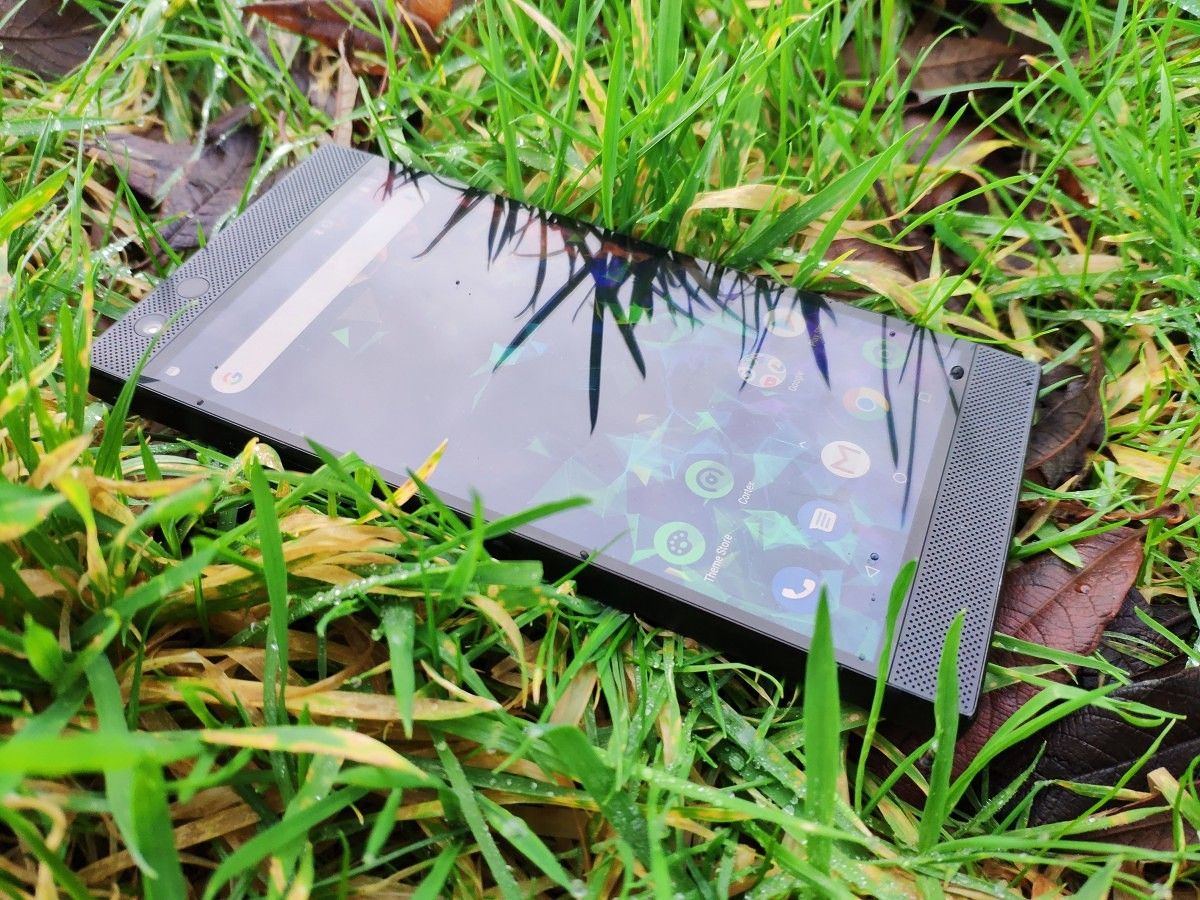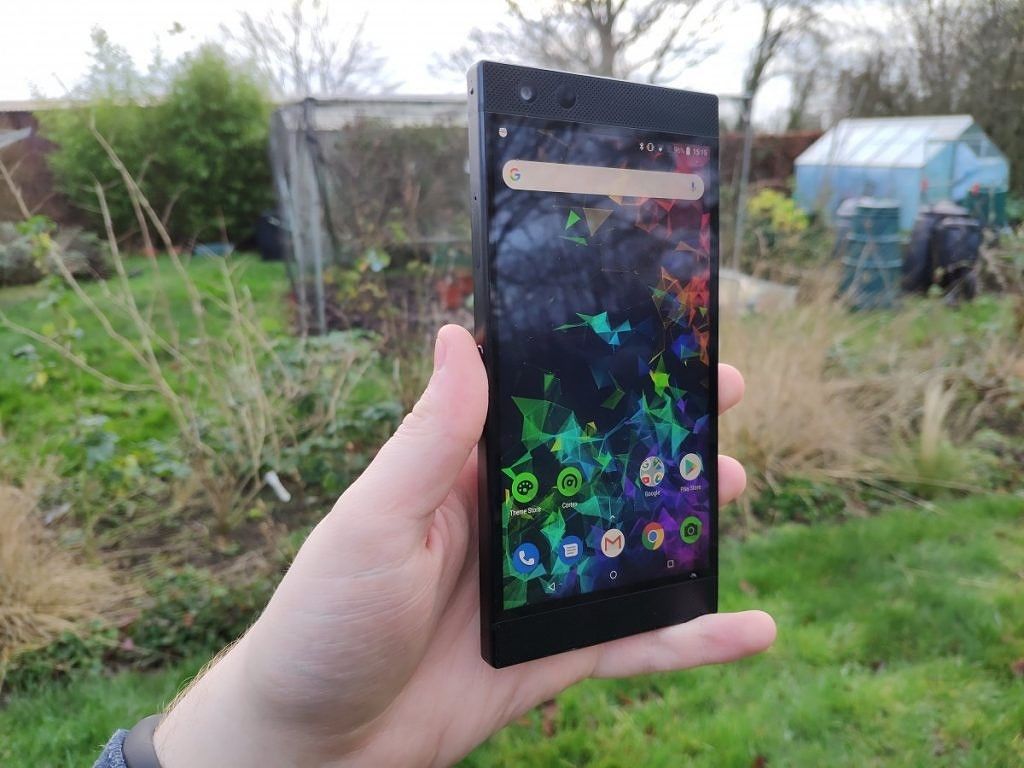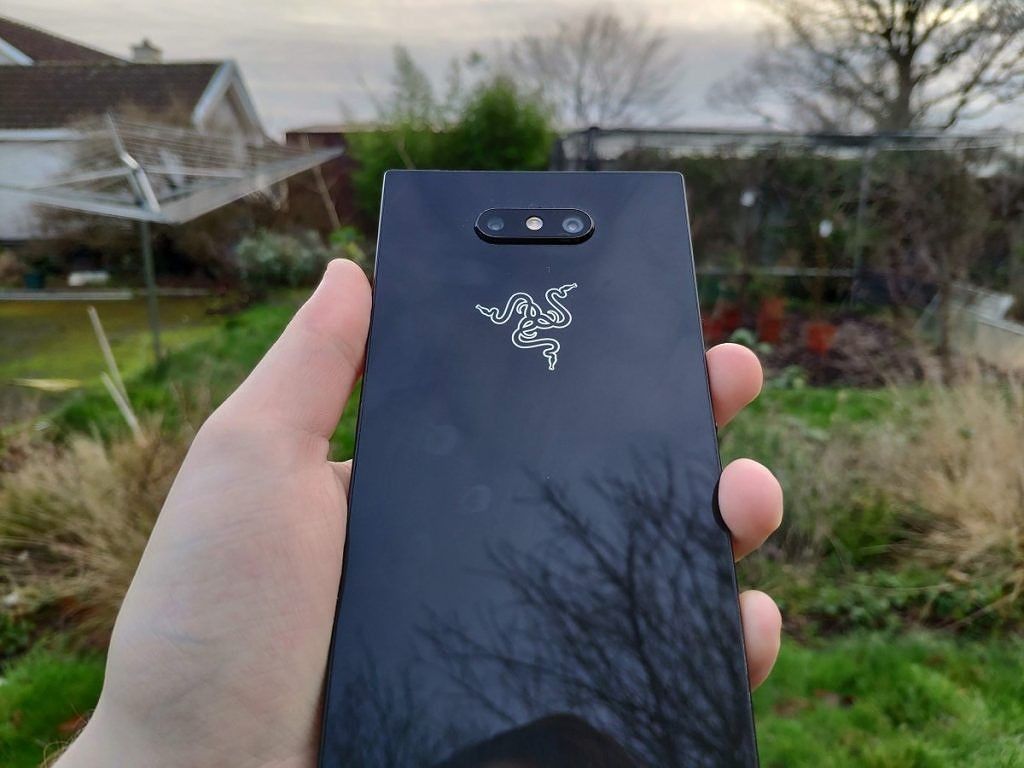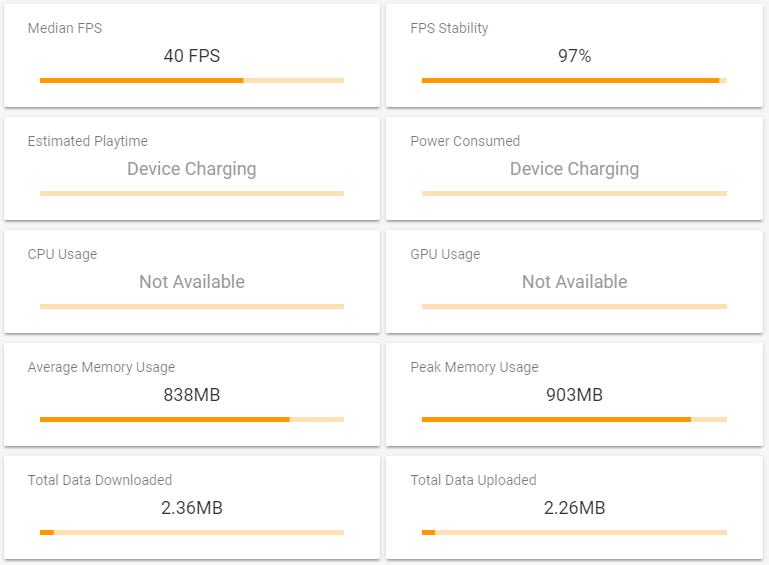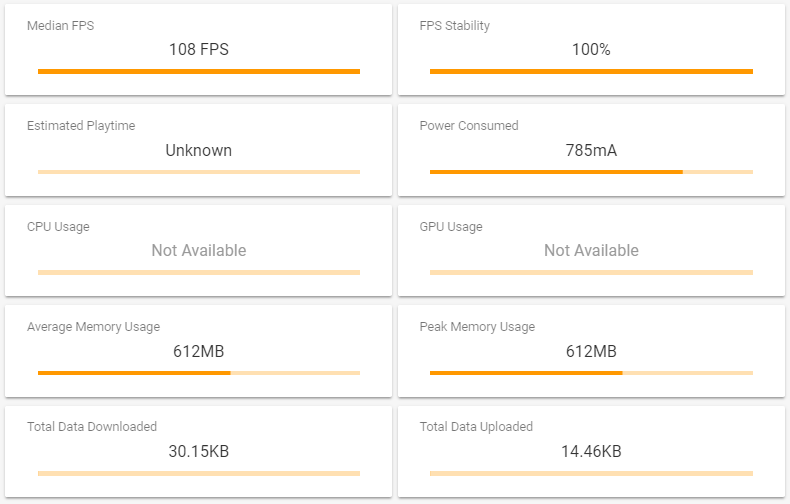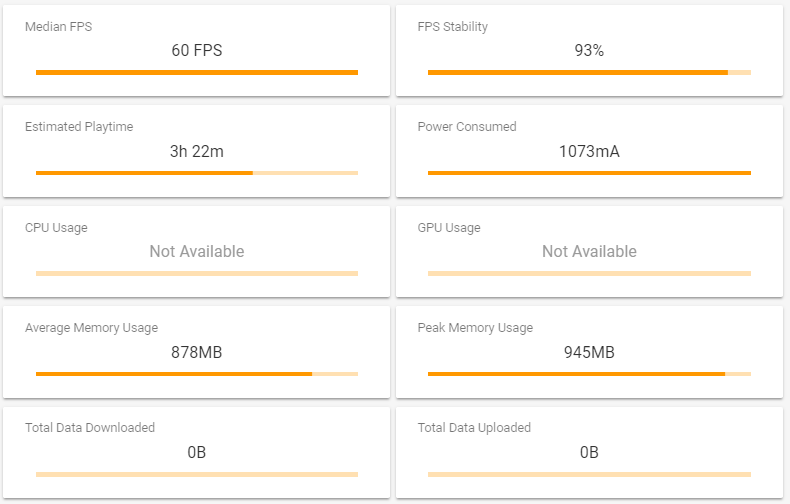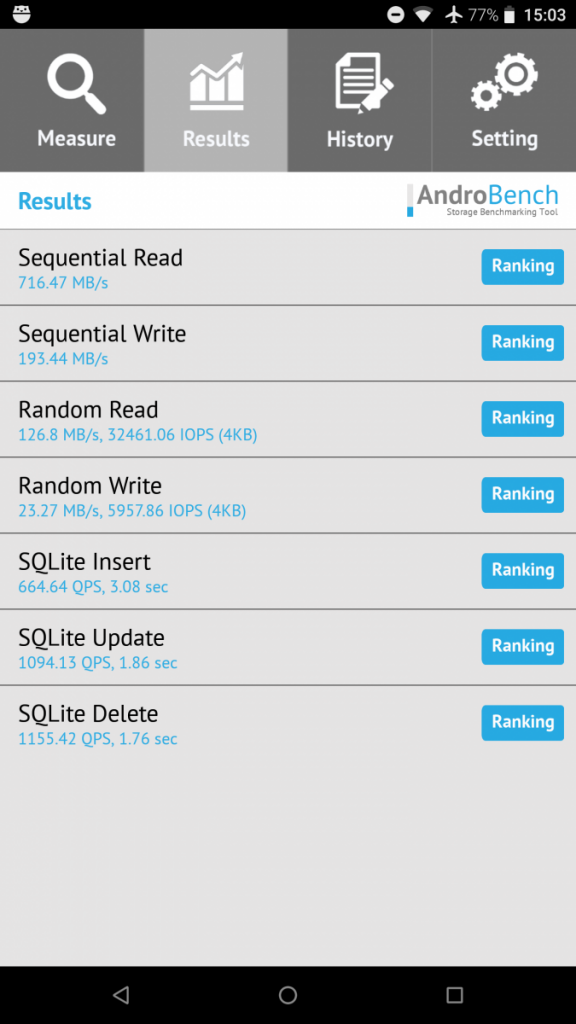When it comes to Android mobile gaming, there are really only a few contenders. Until the new Qualcomm Snapdragon 855 mobile platform starts shipping in flagship Android smartphones later this year, the Qualcomm Snapdragon 845 is the best mobile platform for gaming on Android. Qualcomm's Adreno 630 GPU is the fastest mobile GPU that we currently have over the likes of the Mali G72 and Mali G76 in the Exynos 9810 and Kirin 980 mobile platforms respectively. As such, it's only to be expected that best gaming smartphones like the Razer Phone 2 use Qualcomm's Snapdragon 845—but just how great is the Razer Phone 2? The Razer Phone 2 is advertised as one of the best gaming smartphones around, and not just in gaming performance, but in display hardware, audio performance, and battery life. We've been testing the device—both in benchmarks and real-world use—so that you can decide whether the Razer Phone 2 is worth your money.
Razer Phone 2 Specifications
|
Category |
Specification |
|---|---|
|
Dimensions |
158.5 x 78.99 x 8.5mm |
|
CPU |
Qualcomm Snapdragon 845 @ 2.8GHz |
|
GPU |
Adreno 630 |
|
RAM |
8GB (LPDDR4X) |
|
Rear Cameras |
12MP (f/1.75 wide with OIS) + 12MP (f/2.6 telephoto) dual-tone LED flash, dual autofocus phase detection, 2160p @ 60FPS video recording |
|
Front Camera |
8MP f/2.0 w/ 1080p video recording |
|
Storage |
64GB/128GB (Satin Glass only) w/ microSD support |
|
Display |
5.72-inch 1440×2560 16:9 IGZO LCD514 PPI120 HzWide Color Gamut (WCG)645 nits maximumCorning Gorilla Glass 5 |
|
Audio |
No 3.5mm headphone jack (USB-C to 3.5mm headphone jack adapter included, 24-bit DAC), stereo front-facing speakers with dual amplifiers and Dolby Atmos |
|
Battery |
4,000mAh battery with Qualcomm Quick Charge 4.0+, fast wireless Qi charging |
|
Ports |
USB Type-C |
|
Fingerprint scanner |
Yes (Side-mounted) |
|
Software |
Android 8.1 Oreo (upgradeable to Android Pie soon) |
|
Connectivity |
Single SIMNFCBluetooth 5.0Wi-Fi 802.11 a/b/g/n/acLTE with VoLTE |
|
Bands |
|
The Qualcomm Snapdragon 845 and the Adreno 630 GPU
It's worth noting that most of the Razer Phone 2's power will come from its powerful Qualcomm Snapdragon mobile platform. To their credit, Razer has done a lot of their own software optimizations to take full advantage of the hardware the Razer Phone 2 is running on. They've also introduced their own cooling system to keep the device running at high performance for longer periods of time. Still, the device owes its raw computational power from the onboard Qualcomm Snapdragon 845. The Snapdragon 845 mobile platform includes the Adreno 630 GPU, touting an impressive 30% performance improvement over its predecessor in the Snapdragon 821 while also improving on efficiency by 30%.
Mobile gaming is in a great place now, with games like PUBG Mobile and Fortnite Mobile on the rise, and platform emulators like Dolphin Emulator being the best they've ever been. Other Android mobile games like Asphalt, Dead Trigger, and the new Call of Duty Legends of War also provide some fun gaming experiences right in your pocket, and the Razer Phone 2 should handle them like a champ—both because of Razer's software optimizations, but mainly due to the impressive hardware that it packs.
First Impressions
My first impressions of the Razer Phone 2 focused largely on just how big it feels. The Razer Phone 2 is chunky; it's heavy, and it's very rectangular. The phone takes some getting used to, especially coming from the Xiaomi Mi Mix 2S and OnePlus 6. While at first I disliked its design, I remembered that the Razer Phone 2 is for more hardcore mobile gamers. I learned to appreciate the design when actually playing games. It's not a looker, but it's functional, and the design is partly what makes the Razer Phone 2 so satisfying to actually use. The weight feels like that of a controller, and the large speaker grilles and bezels on either side of the display make sure that you won't accidentally trigger any touches on the display with the palms of your hands. It also makes sure that you won't accidentally block the speakers, as they face towards you.
The design makes sense for who the device is for, which is probably why the back of the Razer Phone 2 looks so beautiful. I have the Mirror Glass version, which makes the back a single slab of black reflective glass with the Razer logo in the middle. It looks really flashy and is above and beyond the design of its predecessor. The back looking as beautiful as it does leads me to believe that Razer is aware that the front isn't as good-looking and that it's a functional design choice more than anything. If that's the case, I'd be inclined to agree with that decision as I see the Razer Phone 2 is a handheld gaming device first and a smartphone second.
The ergonomics of a smartphone are just as important as its performance, particularly for a smartphone that's intended to be held for long periods of time. With two hands holding it sideways, it honestly feels just right. The volume buttons are centered so that you don't accidentally hit them, and the same goes for the fingerprint sensor and power button.
The 120Hz 1440p display is beautiful in games that support it, and even with just the normal Android UI elements, it's hard to explain how satisfying it is navigating through menus and scrolling through social media. It's worth noting that a 16:9 display seems archaic when compared to any other flagship smartphone released in 2018, but the Razer Phone 2 gets a pass given that it's a phone for multimedia consumption, especially games. Games, and most videos, are primarily made for 16:9 displays still, so the Razer Phone 2 doesn't crop any content or display anything off-center.
Razer has nailed this device at first glance, but how is it under the microscope?
Gaming Performance
Gameplay framerate data recorded with GameBench, an excellent service that helps you analyze gaming performance on Android and iOS. GameBench has desktop clients and mobile clients. We used the Android mobile client for our review.
PUBG Mobile
Probably the go-to competitive shooter on Android, PUBG Mobile is a game with a higher skill ceiling than most of what's available (if you aren't playing against bots). You don't want to face frame drops while playing, and you'd like to be able to hear everything around you. A big, high-resolution display is a godsend when playing PUBG, and it looks great on the Razer Phone 2. The Razer Phone 2's speakers get plenty loud too, so there are absolutely no issues with hearing enemies around you in-game.
PUBG very rarely dips below 40FPS, the maximum FPS I could get it to reach. That's on the developers, Tencent, for limiting it and there's little we can do now to raise it further. PUBG is a surprisingly good port of the popular PC battle royale first-person shooter, and just like on PC, you'll want any advantage that you can muster. High FPS is the best way to achieve that, and in a game where reaction times are important, the Razer Phone 2 will not get in the way of you playing. PUBG uses up to around 1GB of RAM, absolutely no problem for the 8GB RAM behemoth that is the Razer Phone 2. It handles it like a champ.
Pokemon Go
This is one of the games that can actually use the Razer Phone 2's 120Hz display, and it looks gorgeous. Animations are fluid, there are very few frame drops, and the 1440p display brings out a ton of detail. I hopped on just for three minutes to send my friends some gifts in Pokemon; I then played around in my inventory and scrolled through my Pokemon lists just to give it a try to see how well it runs.
While Pokemon Go doesn't always maintain 120FPS, it certainly runs consistently at a higher frame rate than PUBG did. Obviously, that's because there isn't a 40FPS cap, but even still the frames that are dropped usually only bring it down to the 60 or even only the 90 mark.
Dolphin Emulator
Emulation on Android is nothing short of a marvel. You can play Nintendo DS games, NES games, SNES games, Nintendo 64 games, Dreamcast games, PSX games, and more, all from your smartphone. One emulator that I figured would really give the Razer Phone 2 a run for its money is Dolphin Emulator, an emulator which lets you emulate GameCube and Nintendo Wii games. Even modern flagship smartphones frequently struggle with this one, depending on the game, so I figured I'd give it a test drive with Super Smash Bros. Brawl. I was impressed.
First, it's worth mentioning that most of the FPS dips were from map loading. The only dip that wasn't was the one right at the end, where it just seemed to drop for no reason. It picked itself back up again and momentarily dipped going back to the character selection menu which is when I finished my testing. Super Smash Bros. Brawl would be made even better with a controller, which you can use with the Razer Phone 2 if you have a USB Type-C adapter and a wired controller like an Xbox controller. (Certain controllers can be wirelessly paired, too.) There are lots of options, but that's personally what I used. I would recommend finding a Bluetooth solution if you can so that you can still plug in your headphones. Emulation is a success on the Razer Phone 2, with New Super Mario Bros also performing similarly. Mario Kart Wii was broken graphically, but even that ran fine.
The Razer Phone 2 is a performance beast for emulation, and I cannot give it enough praise. If you've ever wanted to play Wii games (within reason) or GameCube games on the go, then you can't go wrong here.
Overall, gaming performance, as expected, is superb. I also gave ARK: Survival Evolved and Asphalt 9 a try, with both having no performance issues whatsoever. It's the best gaming experience on an Android smartphone I've used to date, and even just the audio quality is noticeably better with the THX-made DAC that's included in the box. Just for listening to music it's excellent, and in this case, it nearly made up for the lack of a headphone jack. It's the best audio experience I've ever had, hands-down, with my Sennheiser Momentum 2.0 headphones.
Storage Speed
The speed of your smartphone's storage is just as important as the chipset inside, if not more so in some cases. The storage speed of a smartphone can make or break it, as it can make a fast-on-paper smartphone feel slow and sluggish. The Razer Phone 2 passes this test with flying colors.
Battery Life and Temperatures
A Qualcomm Snapdragon 845 and a 4,000 mAh battery should have no trouble getting your phone through the day. I spoke with one of our contributors, Eric Hulse, who bought the phone after launch, and while his experiences of the battery life on the Razer Phone 2 were generally described as good, he doesn't use his with a SIM card, which will skew the results. I also spoke with Jaime Rivera of PocketNow, who described the battery life of his Razer Phone 2 review unit as exceptional. I then spoke with TK Bay who reviewed the device for XDA TV, who said that he just found it to be "average." For him, it wasn't good or bad, and he'd seen smartphones with better battery life. In short, the Razer Phone 2 has been a mixed bag for the people I talked to who have used it. In my experience, however, I found its battery life to be below average from what I'm used to.
At first, I couldn't figure out why. Was it the massive backlit logo on the rear of the device? Or maybe it was just trade-offs in trying to have the fastest device on the market. What if it was the 120Hz display? The device comes with 90Hz variable refresh rate enabled out of the box, but the first thing I did was bump it up to 120Hz. Of course, we would expect that allowing the device to go up to a 120Hz refresh rate may reduce the battery life.
60Hz display
If the above battery life looks decent, that's because it is. 7 hours 32 minutes of PC Benchmark's battery life test is respectable, especially for a 4,000 mAh battery on a 1440p display. The caveat is that this was run at 60Hz, just like every other Android smartphone display. Here's what happens when we switch over to the 120Hz refresh rate mode.
120Hz display
Going purely off of synthetic benchmarks, the 120Hz display drops the battery life a lot compared to when the device is in 60Hz mode. It's worth noting, however, that the system actually uses a variable refresh rate, so when you set it to 120Hz there may be some scenarios where it drops down to 90Hz, 60Hz, or even lower.
These are my battery statistics, which should help paint a picture of my general usage. I am a heavy user of my phone, especially when commuting when my signal can range from poor to decent. Even still, I have had phones do a lot better on that trip. Signal strength is certainly a big factor, but it's never affected my battery life that much with any other phone I've owned. My smartphone usage consists of Snapchat, Facebook Messenger, YouTube, and Spotify most often, of which most are battery suckers. Dropping the Razer Phone 2 to 60Hz and using that for two days gave me a better experience than before, but it was still worse than my other phones, the Mi Mix 2S and OnePlus 6T, despite having a 4,000mAh battery. In short, your mileage may vary.
In retrospect, it makes sense that a phone with a 120Hz maximum refresh rate may not have as great battery life as comparable devices with 60Hz displays. Android smartphones, at times, struggle to even push a consistent 60FPS. When we talk about frame rates on Android smartphones, by the way, your phone can technically be pushing 60FPS while still appearing janky. That's because the time between frames themselves is most important. For a perfect 60FPS, your device would be required to push a new frame every 16.67ms (1 second divided into 60 parts). If this varies, then you can have some frames closer together relative in time to others, creating a feeling of jank and inconsistency whilst retaining, at face value, a consistent 60FPS. Now bump that up to a 120Hz display. Ignoring the increased precision required for frame rendering, your phone now has to work a lot harder to render twice as many frames on the display at any given time. However, the Razer Phone 2 uses a variable refresh rate, so display should not always be running at the most power-hungry 120Hz refresh rate.
There is one more issue here, whether your battery life experience is poor or excellent. The Razer Phone 2 lacks a headphone jack, so if your battery runs low and you're using the USB-C port for headphones, you either need to take a break from gaming to charge your phone or get Bluetooth earphones. I wish this were not the case, as a gaming phone will need to be charged more often by virtue of what it's used for. Not everybody is going to be playing with audio output from the front-facing speakers, especially not when you're commuting as I do.
To the Razer Phone 2's credit, it handles temperatures like a champ. You may have expressed concern after the company revealed that the Razer Phone 2 would have a glass back, but the Razer Phone 2's cooling is nothing short of excellent, and you'll have no problem with overheating or the like. It's worth noting that the power draw from the 120Hz refresh rate mode made the temperatures run a few degrees Celsius higher, though.
Razer Game Booster
I wasn't sure what to expect when it came to the applications pre-installed on a gaming phone. The Razer Cortex application is a gaming app market which I expected, but Game Booster surprised me. I figured it would be some gimmicky feature that lets you kill all apps right before running a game or something, but it turned out to actually be useful. Take a look below.
For every game, you can choose the processor's frequency, the display resolution, and the display refresh rate. I was impressed by these options, particularly because some games may not need all that power to run. Razer's Game Booster app is genuinely impressive, and it's the app I never knew I needed on a gaming phone. You can control how much power, roughly, games will use on your smartphone.
Conclusion
The Razer Phone 2 impressed me. It's more than just a phone with a massive RGB logo on the back, something I half expected to be the case given the company's reputation in gaming products. As we already identified going back to the original Razer Phone, the company has put an extraordinary amount of effort thus far into their smartphones. It may ask for a high starting price, but if mobile gaming is your prerogative, then the Razer Phone 2 is better than a lot of flagship smartphones available today. It runs cool, sustained performance is great, and the display is beautiful. The Razer Phone 2 is a success in my eyes for what it sets out to do.
For another perspective on the Razer Phone 2, check out TK Bay's review on the XDA YouTube channel.

